While every patient is unique and present with a different set of problems, there are several common types of malocclusion that our clinic staff see on a regular basis.
These include:
Crowded teeth or overcrowding takes place when the jaw bone is too small for teeth to grow into the mouth on a straight trajectory. As a result, the teeth need to rotate and overlap against each other to fit in, creating crookedness and malalignment.
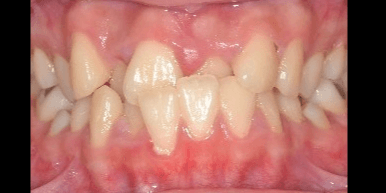

Like a jigsaw puzzle, teeth needs to be in a certain shape and size to have the best fit against each other.
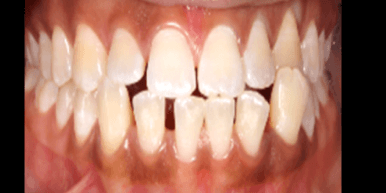
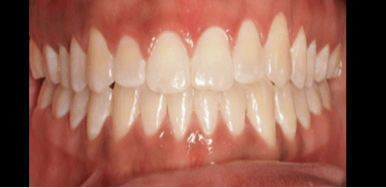
An open bite occurs when the front upper and lower teeth slant in an outward direction, preventing them from touching each other when the patient bite down.
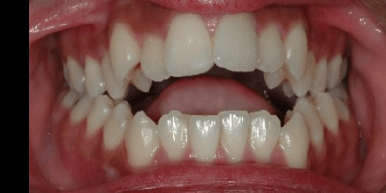

The opposite of an overbite, an underbite is seen when the lower teeth along the lower jaw protrude out further than the upper front teeth. Underbites are also often the product of incorrect jaw alignment.
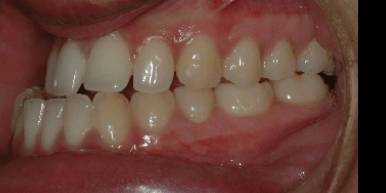
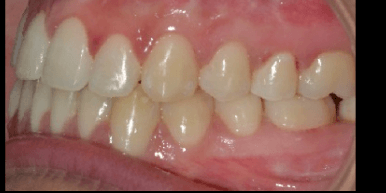
An overbite is evidenced when the upper jaw and teeth are extend too far over the teeth on the lower jaw resulting in the appearance of protrusive upper lip and teeth, or buck teeth. Overbite is the result of a mismatch in the size between upper and lower jaw bone sizes, with an abnormally small lower jaw bone being the most common.
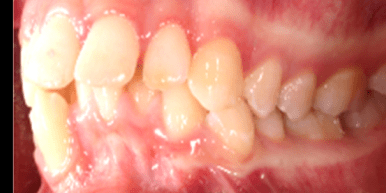

A crossbite occurs when a tooth (or several teeth) is situated too close to the cheek or tongue than the tooth it should align with in either the upper or lower jaw. As a result, the teeth involved in the crossbite are not able to bite against each other normally, creating an interference in the bite during chewing.
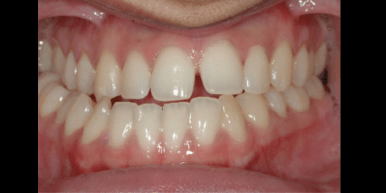
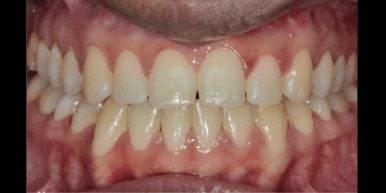
A deep bite occurs when there is too much overlapping between the top and bottom front teeth.
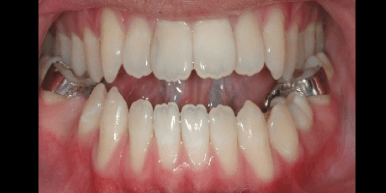
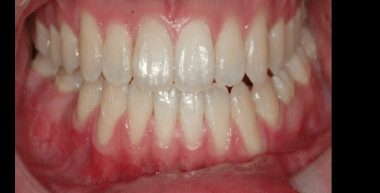
Get a Consultation
answer our 1 minute questionnaire and get a consultation with our orthodontist!


WHAT ARE YOU LOOKING FOR?
A correct diagnosis is critical to resolving ongoing problems with teeth alignment. The course of recommended treatment will vary according to the problem diagnosed.


Overcrowding occurs when the mouth is too small to safely house all of the teeth. This leads to teeth that overlap each other, causing leaning and other tooth irregularities affecting both alignment and the appearance of the bite. Some teeth will be pushed higher in the gum line while others may shift slightly forward or backwards to find their position.
As with many other malocclusions, overcrowding can be caused by a number of different factors. Though they can be hereditary, this type of dental issue can be caused by tongue thrusting and mouth breathing.
Left untreated, crowded teeth can result in a number of dental problems ranging from periodontal disease to discomfort when eating and even early tooth loss.


An open bite is present in a patient that lacks the ability for their teeth to connect when their mouth is closed. The bite issue can be mild or severe and is generally impacted by the construction of the face and jaws as well as the existing formation of both the teeth and gums. In many cases, an open bite can also be influenced by certain habits.
Though heredity is the most common reason for the development of an open bite, this type of dental problem sometimes occurs as a result of uneven teeth in the upper and lower jaws. Other conditions that can lead to an open bite include tongue thrusting, thumb sucking, facial trauma, prolonged bottle feeding, excessive pacifier use, or tumours.
There are several different approaches we can take to help resolve an open bite. These include the use of traditional metal braces, clear aligners, and as a last resort, orthopedic surgery.


As mentioned, a healthy smile has a slight overbite in that the upper teeth will overlap the lower teeth a little. But a bite in which the upper jaw noticeably protrudes beyond the lower jaw is an overbite, or called an overjet when the protrusion passes a certain threshold. Sometimes the overbite is caused by the way the teeth are aligned, and sometimes it’s because of an issue with the overall jaw structure. Overbites, which are a rather common type of malocclusion, can cause speech problems like lisps, difficulty eating, jaw pain, and damage to teeth which leads to tooth decay.
Overbites are often corrected by using braces in conjunction with rubber bands or springs that pull the jaw into place over a period of many months.
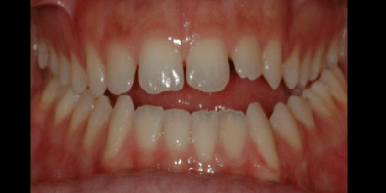
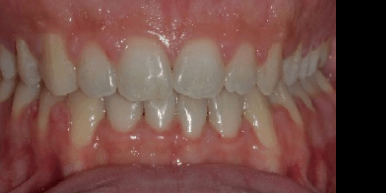
Underbites are when the lower teeth protrude beyond the upper teeth. Like with overbites, underbites can lead to jaw pain and the uneven wearing of teeth, eventually causing issues with tooth decay. Likewise, underbites cause the teeth to erode more quickly than normal. About 10% of Americans have underbites, making them not as widespread as overbites but still fairly common.
Underbites are easiest to treat when caught early. Orthodontists often use a palatal expander as a child is growing into a teenager to widen the upper jaw and help it to fit better into the lower jaw. Another device sometimes used is a type of headgear called a reverse pull face mask. In more severe cases, an oral surgeon will break the lower jaw and reset it farther back with medical hardware.


Crossbites, a more complex situation than either overbites or underbites, happen when the upper teeth on one side end up on the inside of the lower teeth when the jaw is closed. Crossbites can cause significant wear on the teeth, leading to gum disease or bone loss. Crossbites may be inherited, but they can also be caused or worsened by poor oral habits like thumbsucking.
As far as orthodontic problems go, crossbites are fairly serious and should be treated young. Often treatments can begin as young as age 7, and early treatment makes the problem easier and less expensive to correct. Various retainers and appliances are used to treat this condition.


Irregular spacing is caused by crooked or misaligned teeth. This is one of the most commonly seen dental problems in both adults and children. There are many different reasons why a person may end up with irregularly spaced teeth, causing crookedness. This problem can occur as a result of teeth that simply shift positions because they lack the size to fill the space allotted for them, causing them to lean. Some habits such as prolonged use of a pacifier or thumb sucking can also be to blame for teeth that are irregularly spaced. Other issues which may also affect the development of crooked or misaligned teeth include genetics, improper dental care, or injuries to the face.
Unfortunately, left untreated, irregularly spaced teeth can lead to further dental complications. These can include such problems as the development of periodontal disease, issues with chewing and proper digestion, speech impairment, excess tooth wear, and poor self-esteem.
Both traditional metal braces and Invisalign are effective strategies to resolve issues with irregular spacing of teeth.


The most common type of dental braces is still traditional metal braces; they are composed of high-grade stainless steel. They are more comfortable and lighter-weight than in the past and straighten your teeth by using metal brackets and arch wires. To customize your look and make it more colourful, you have the ability to add coloured elastics (small rubber bands) to your metal braces.
Book a Consultation
Get started todaY by calling us at 604-558-0993 (Vancouver) OR 604-501-0993 (sURREY), or by filling the form below.
During your initial consultation, we will understand your situation, perform a visual examination of your bite, recommend a treatment plan and answer any questions or concerns you may have.
An open bite occurs when the front upper and lower teeth slant in an outward direction, preventing them from touching each other when the patient bite down.


The opposite of an overbite, an underbite is seen when the lower teeth along the lower jaw protrude out further than the upper front teeth. Underbites are also often the product of incorrect jaw alignment.


An overbite is evidenced when the upper jaw and teeth are extend too far over the teeth on the lower jaw resulting in the appearance of protrusive upper lip and teeth, or buck teeth. Overbite is the result of a mismatch in the size between upper and lower jaw bone sizes, with an abnormally small lower jaw bone being the most common.


PacificWest Dental offers Invisalign, braces, lingual braces and other orthodontic treatments in Vancouver and Surrey. The clinic provides orthodontic, prosthodontic, periodontal treatments and oral surgery. Operating from Vancouver and Surrey, PacificWest Dental’s goal is to provide the highest level of patient health and satisfaction, and to help patients achieve their perfect and healthy smile.